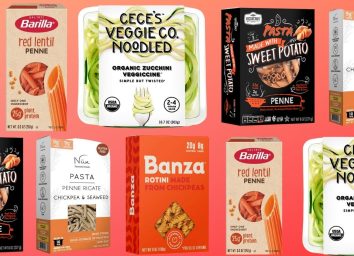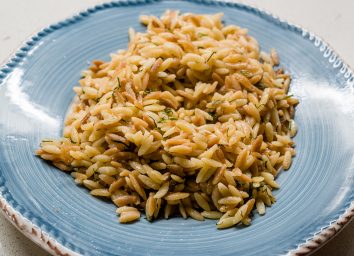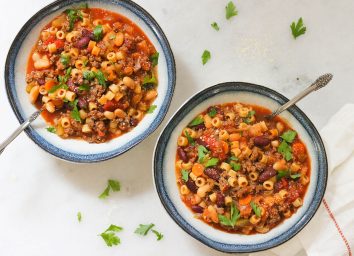13 Pasta Hacks Everyone Should Know
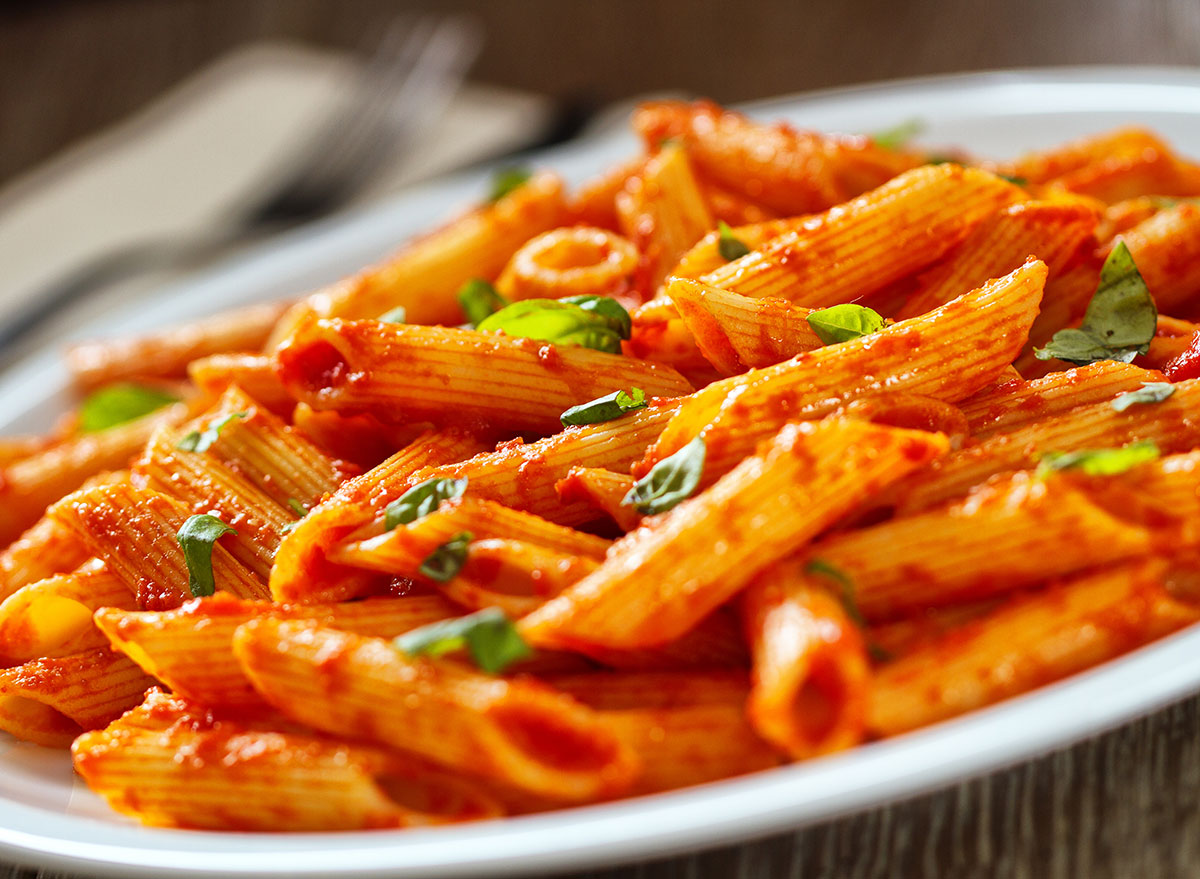
You might think that cooking pasta is a pretty simple experience. You boil the water, dump in the noodles, and put them in the sauce once they're drained. But if you want an extra-flavorful pasta dish, there's a lot more to it than that! From salting your pasta water to adding the perfect toppings, here are some pasta hacks for the best-ever bowl of noodles.
And for more, don't miss these 15 Classic American Desserts That Deserve a Comeback.
Salt the water—a lot
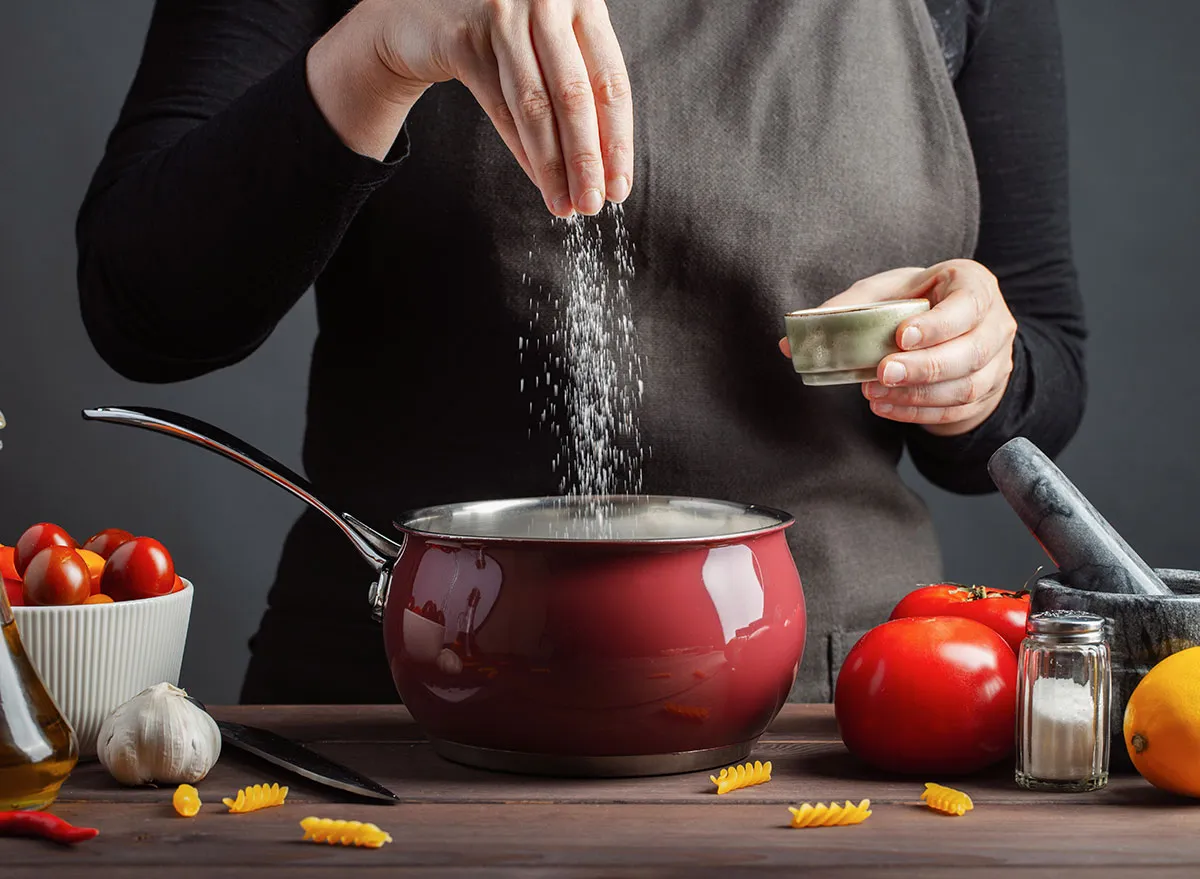
If your pasta's as salty as the sea, that's not a bad thing. "I'm such a believer in salting pasta water every single time," says Yumna Jawad of Feel Good Foodie. "It's basically the best opportunity to flavor the pasta and really allow the salt to penetrate into the pasta in a way that is much harder to accomplish after it's cooked."
Go ahead and salt that pasta water liberally—it will make the dish better.
Coat your noodles in olive oil after they're done cooking
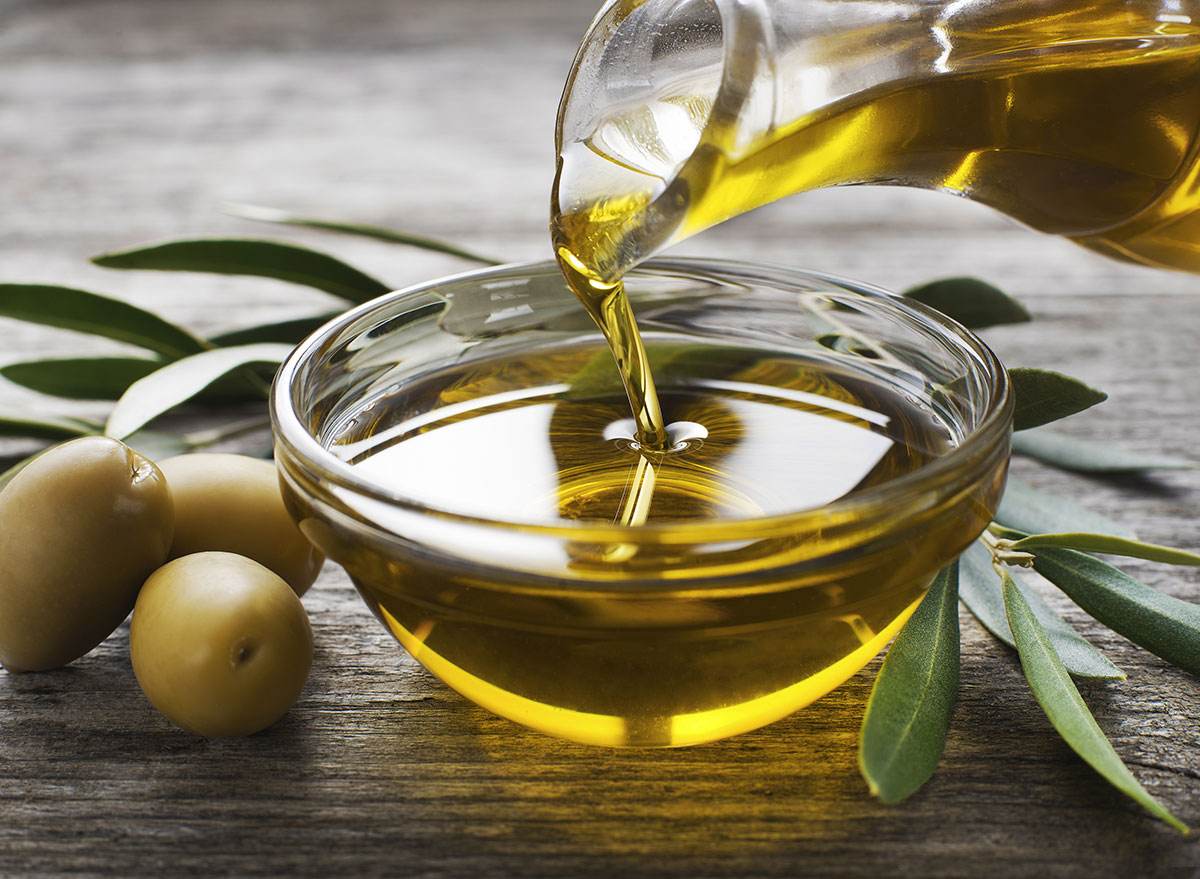
Adding olive oil to your pasta water is a major no-no. But if you coat the noodles in olive oil after they're done cooking (and if you aren't dressing them right away), it can prevent pasta sticking. A gummy plate of noodles is the last thing you want!
Make a homemade pasta sauce
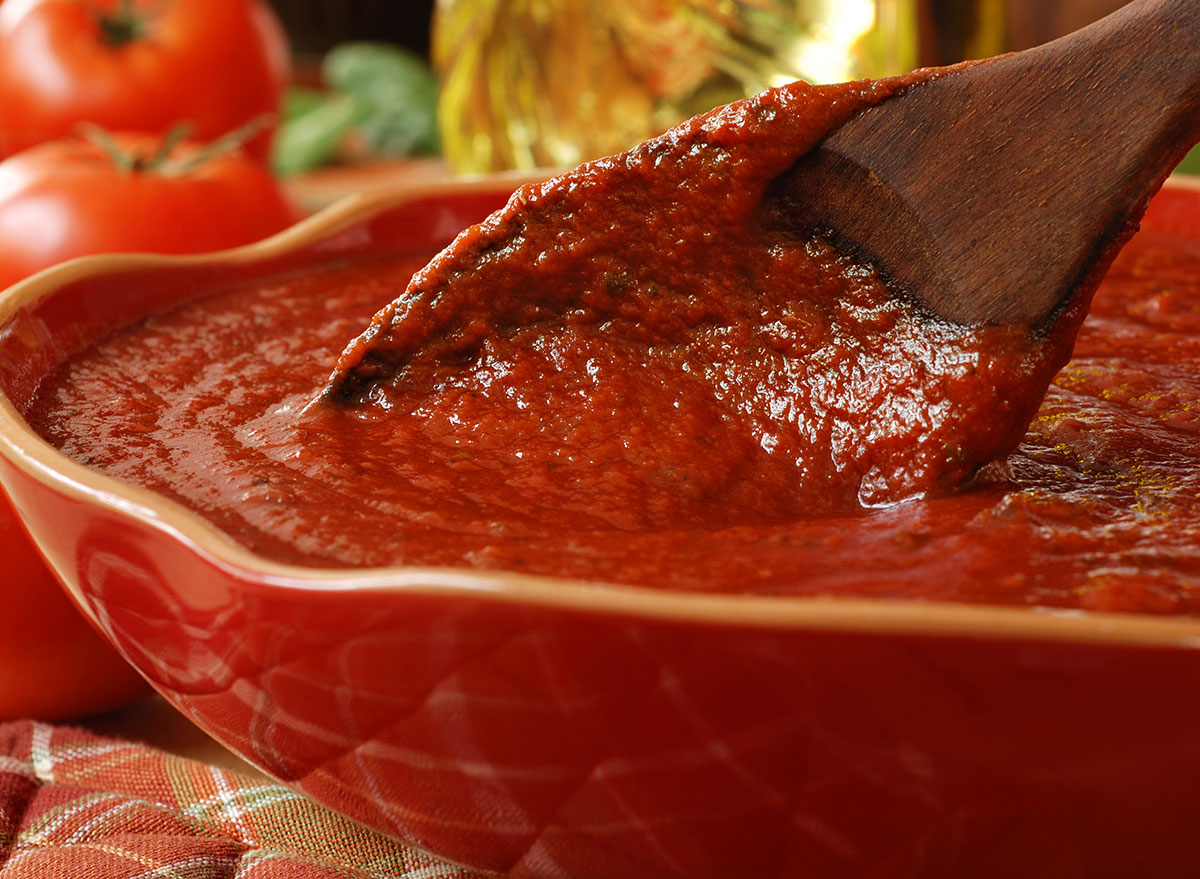
Making pasta sauce from scratch is worth the extra effort. You won't get all of the added sugar and salt from jarred pasta sauces, and you can season it to your heart's content.
"My favorite pasta sauce is my homemade marinara sauce, which only requires three ingredients," Jawad says. "Most people can't believe that it only requires onions, garlic, and crushed tomatoes. But it's that easy, and it's so much more wholesome and lighter than jarred sauce."
You can't go wrong with our Homemade Tomato Sauce Recipe.
Reheat your leftovers the right way
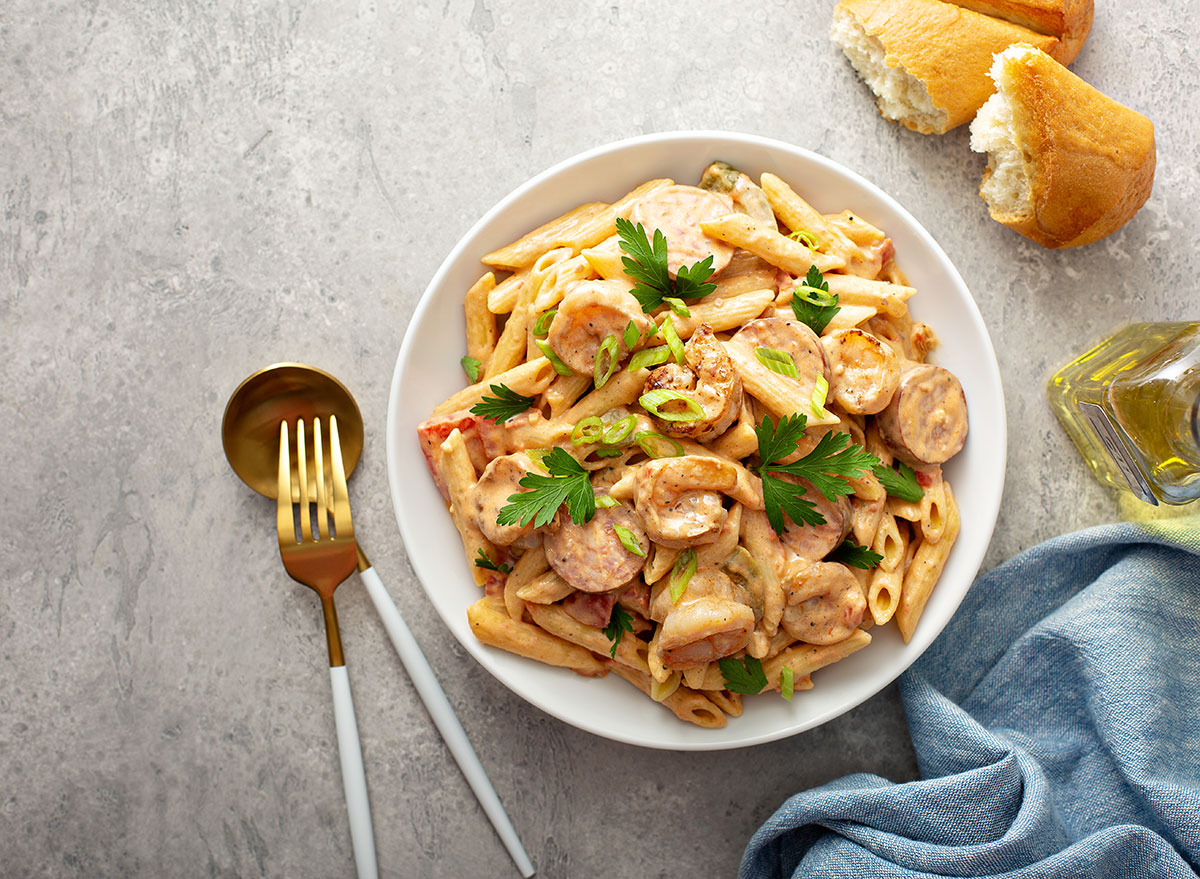
Don't just toss your noodles in the microwave. "Use a hot pan with a little bit of water or stock to loosen it up," executive chef Bryan Forgione of Buddy V's Ristorante in Las Vegas, previously told Eat This, Not That. The liquid will keep your noodles from becoming dry or mushy.
Measure the perfect serving size of spaghetti
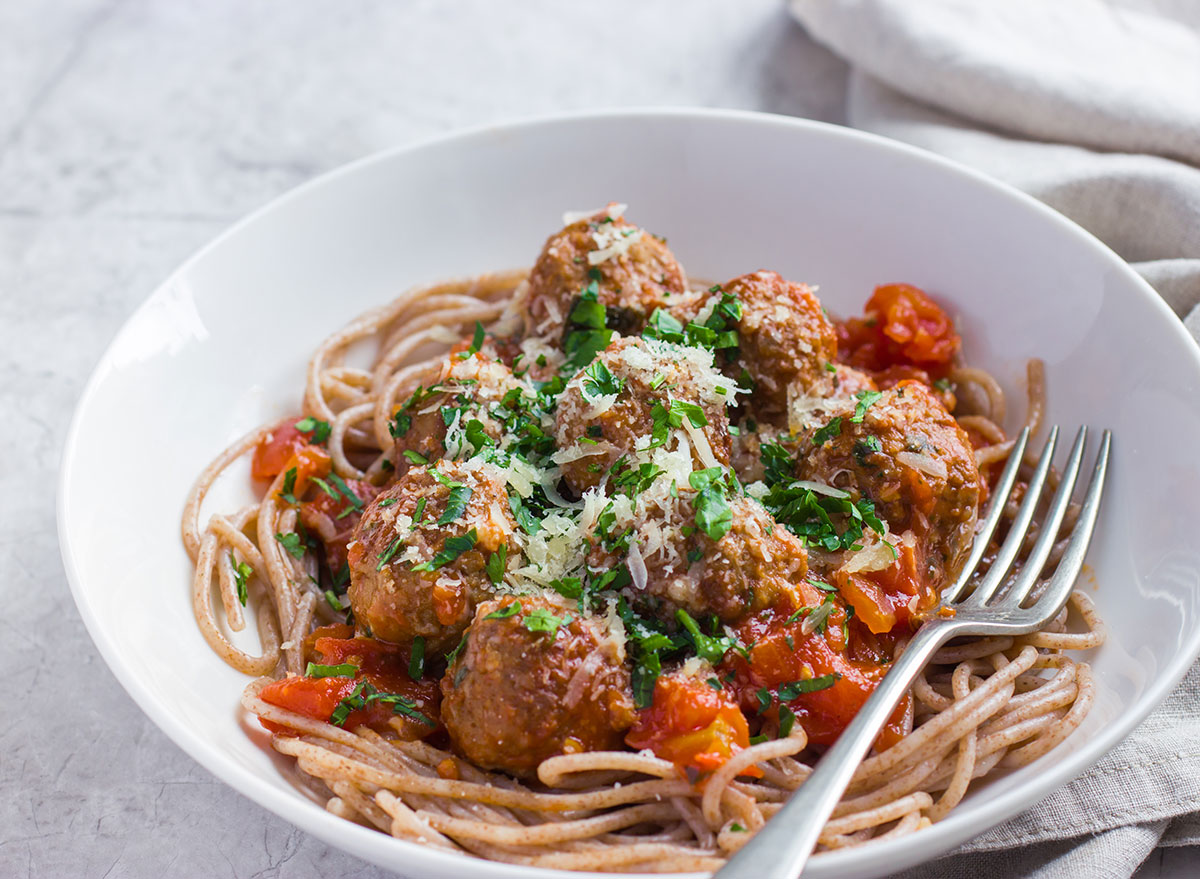
This hack makes its way around the internet every so often, and if you haven't heard it yet, you're in for a treat. It turns out, the hole in spaghetti spoons isn't just for water drainage. If you put dry pasta in the hole, the amount that fits is a serving size.
Know that one-skillet pasta may not be a time saver
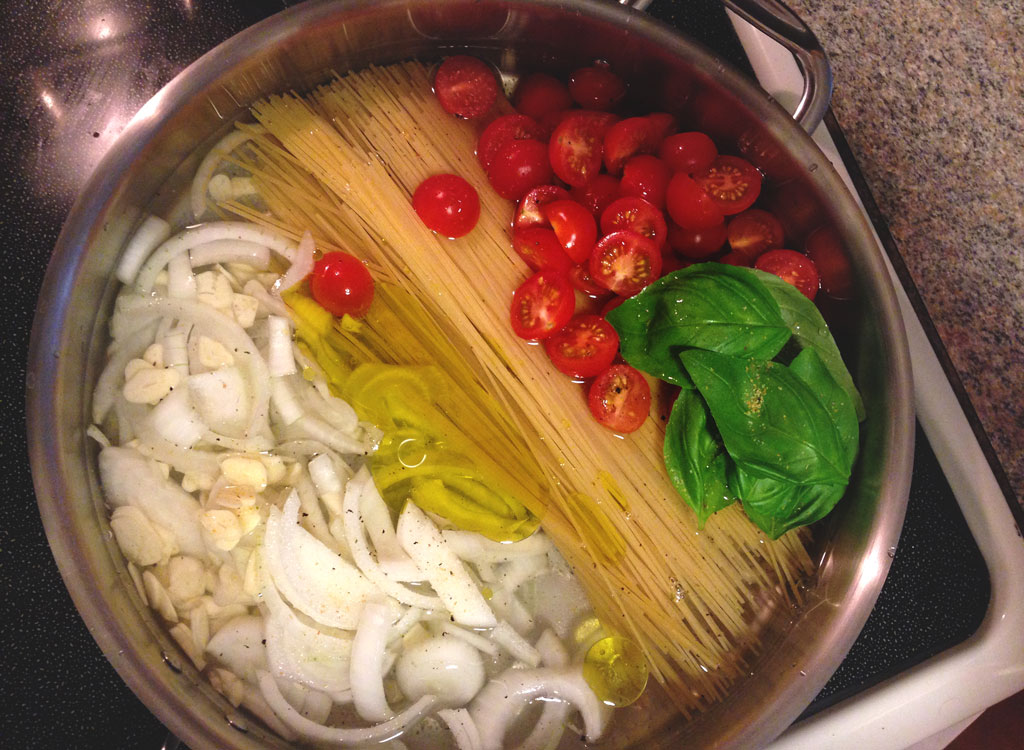
Have you ever seen recipes on Instagram for skillet pasta dishes that don't want you to boil the noodles in a separate pot? It can be tempting to try these out—less cleanup is always a good thing—but they can be tricky to get right.
"It's important to understand that although it's an easy method of cooking pasta that doesn't require multiple pots and waiting times, it's still a very hands-on approach to cooking pasta," Jawad says of one-pot recipes. "That's because in order to get the best consistency, you need to constantly stir the pasta with the water, sauce, and vegetables to get the pasta to cling to the sauce and cook evenly."
Not sure where to start? Jawad has an easy one-pan pasta recipe that uses simple ingredients. She recommends using a cup of liquid for every two ounces of pasta with this cooking method.
Make sure you use enough water
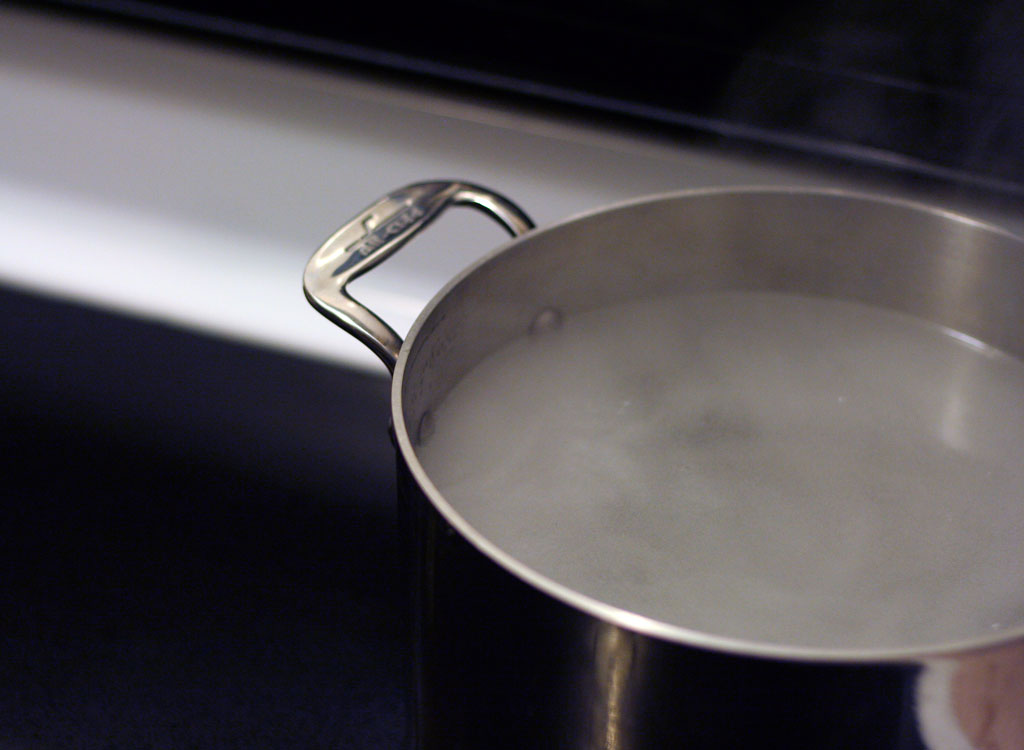
If you don't fill your pot high enough, your noodles can get clumpy. Francesca Montillo, Italian culinary instructor and author of The 5-Ingredient Italian Cookbook, says to use four quarts of water for each pound of dry pasta you're cooking.
Now that you know the best ways to cook your noodles, try one of these 17 Easy Pasta Recipes That Are Surprisingly Healthy.
Cover your baked pasta
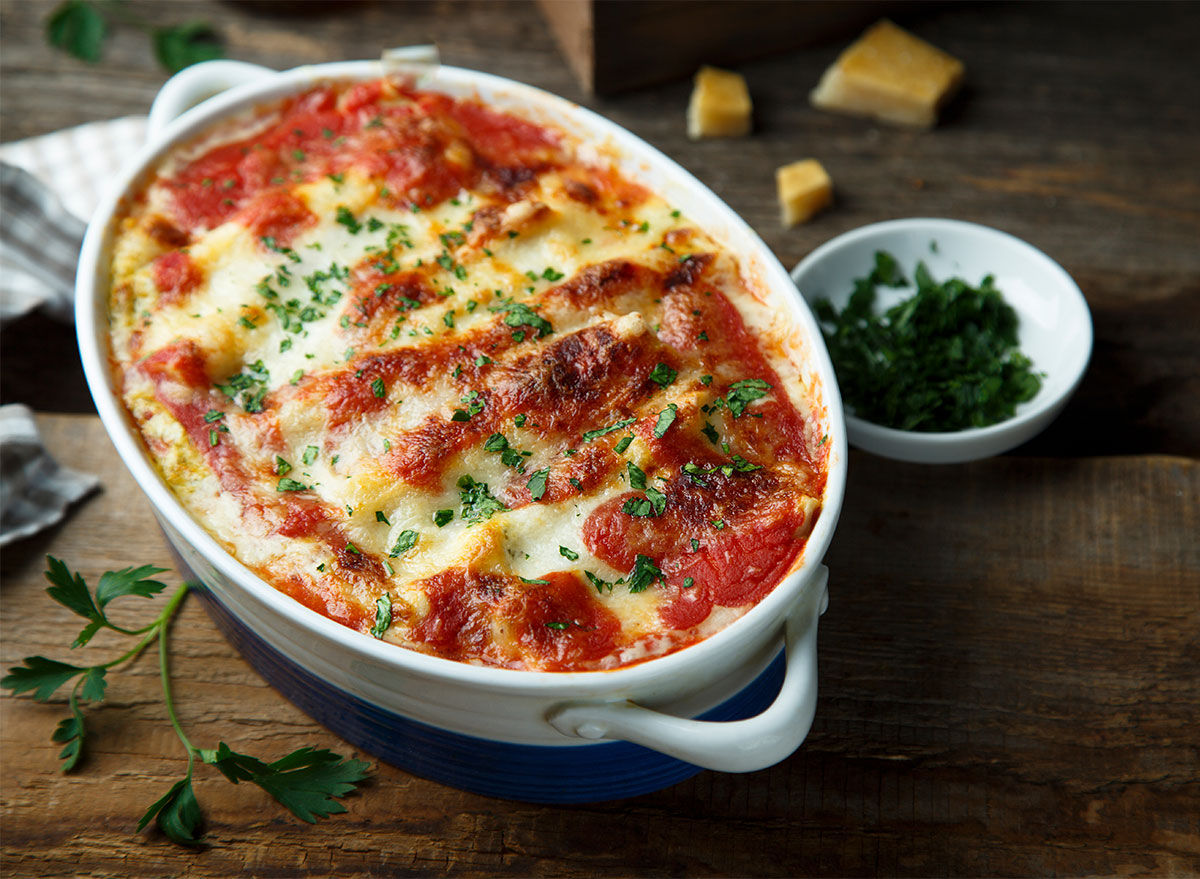
"I highly recommend covering the baked pasta with aluminum foil. That allows the steam from cooking to hydrate the noodles and keep everything moist," Jawad says. "It minimizes the moisture escaping to the oven, which is what usually results in dried baked pasta. If you're adding cheese to the baked pasta, remove the foil, add the cheese and then broil for a couple minutes just until bubbly."
Don't add pasta before the water is boiling
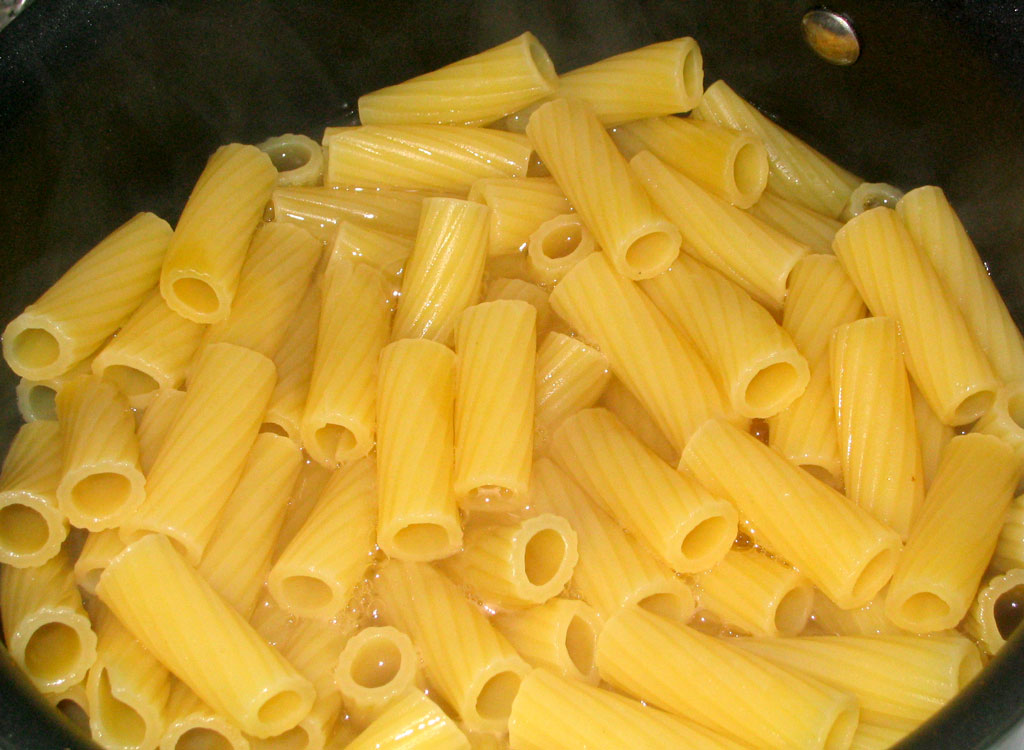
Yes, we know it's hard to wait! But you'll only increase cook time (and possibly end up with over- or undercooked noodles) if you do this. Add pasta when the water is boiling, and you'll be good to go.
Make sure to stir
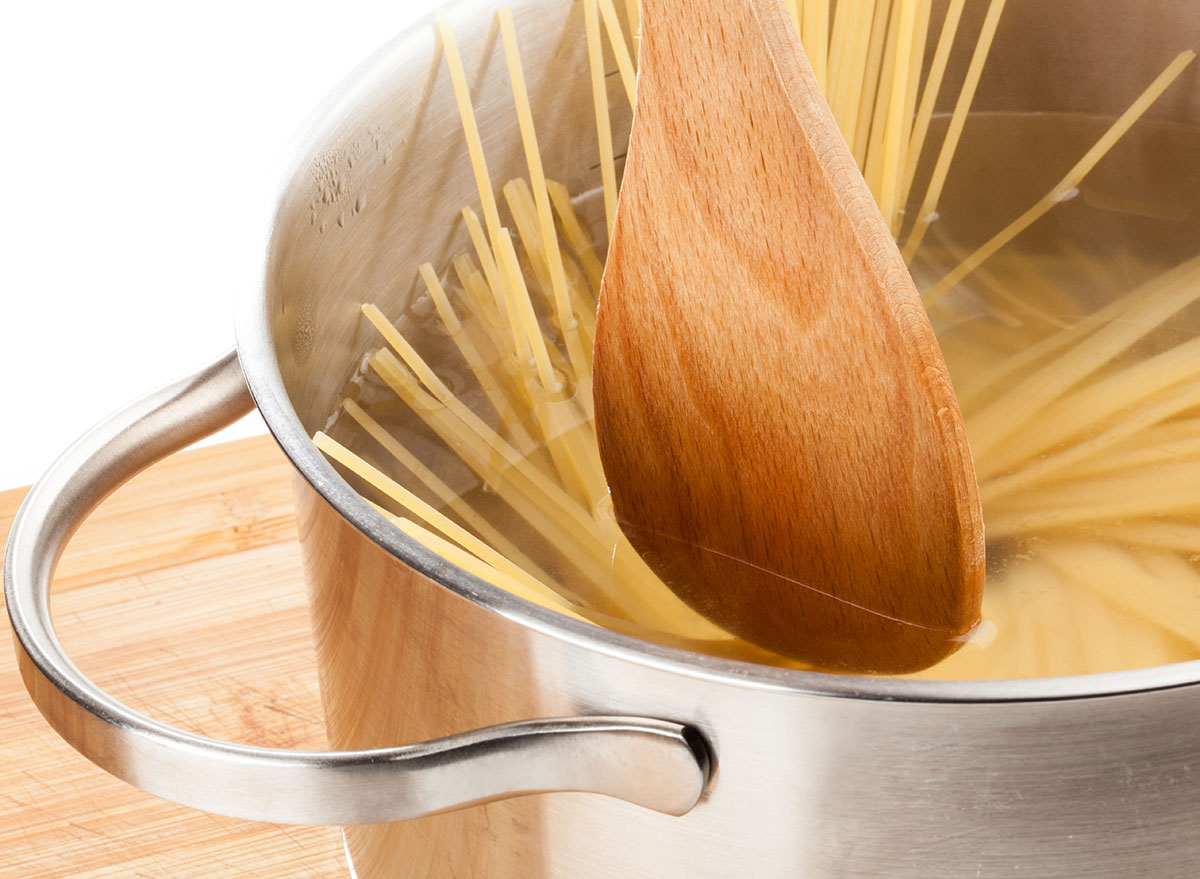
Giving your noodles a good stir while they cook will help keep them from sticking to the pot and each other. (One or two stirs should be plenty.)
Sauté aromatics before adding them to the sauce
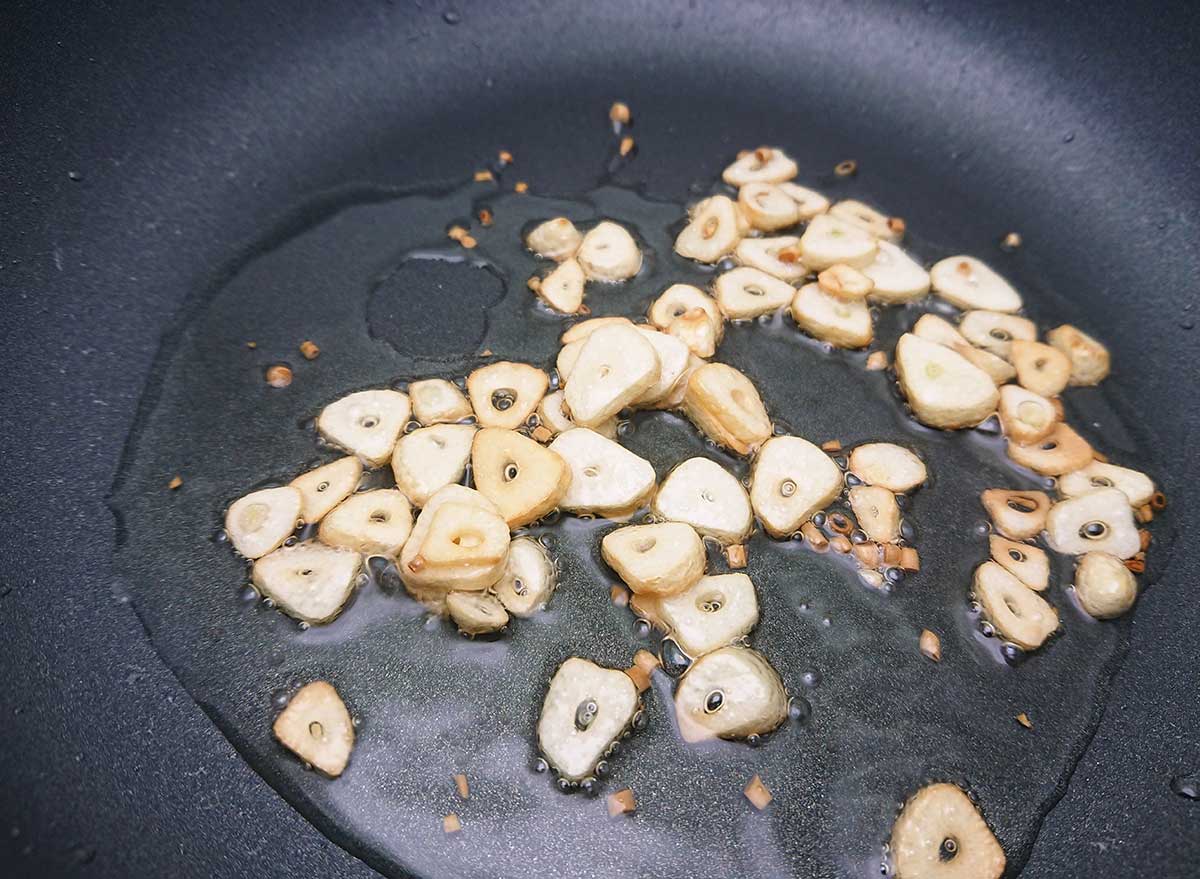
If you're adding minced garlic to your tomato sauce (and first things first, step away from the refrigerated jar of minced garlic), sauté it in a bit of olive oil before adding it to the sauce. It's an extra step, but it will bring out the best of the garlic flavor, not to mention that it will make your kitchen smell amazing.
Heat up the sauce in a pan, not a pot
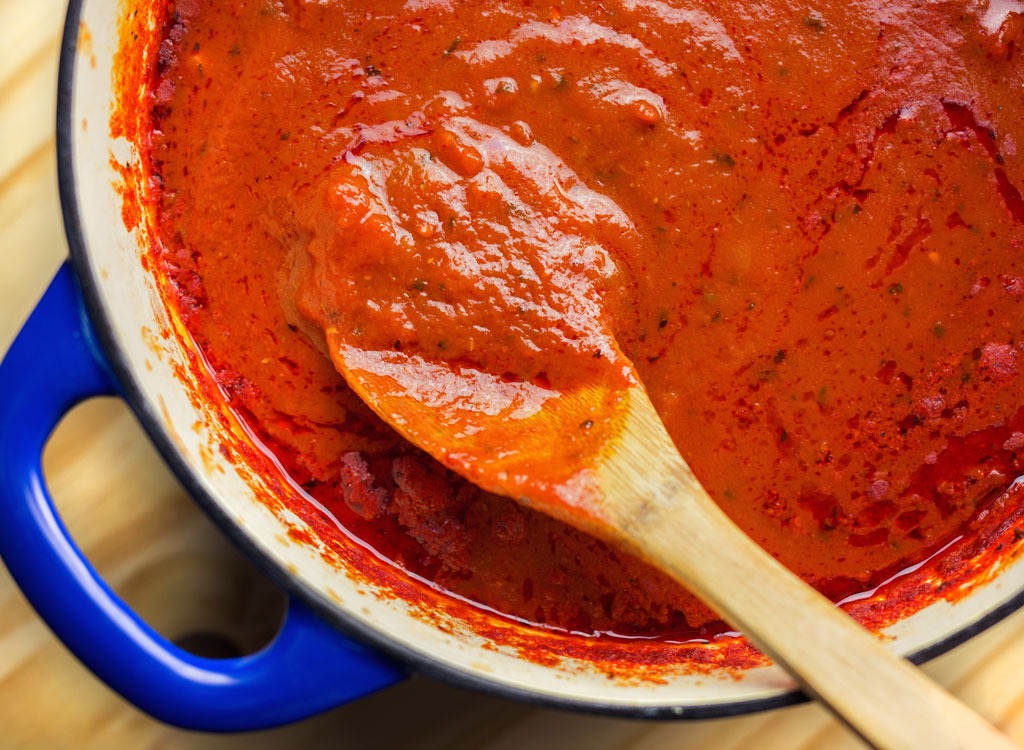
If you're using a jarred pasta sauce or heating some leftover homemade sauce from the fridge, warm it up over the stove in a large pan, not in a saucepot. That way, you can add the pasta in when it's done boiling and warm everything up together. And if you want to take things to the next level, add a little reserved pasta water into the mix, too.
"The water that you get from cooking off the pasta adds slight salinity, and the starchiness of the water helps bring the sauce and the pasta together," Mindy Oh, executive chef of Mora Italiano in Encino, California, previously told Eat This, Not That. "Contrary to what you would expect, the sauce itself does not become watery, but helps the sauce achieve a more even consistency."
Top it off
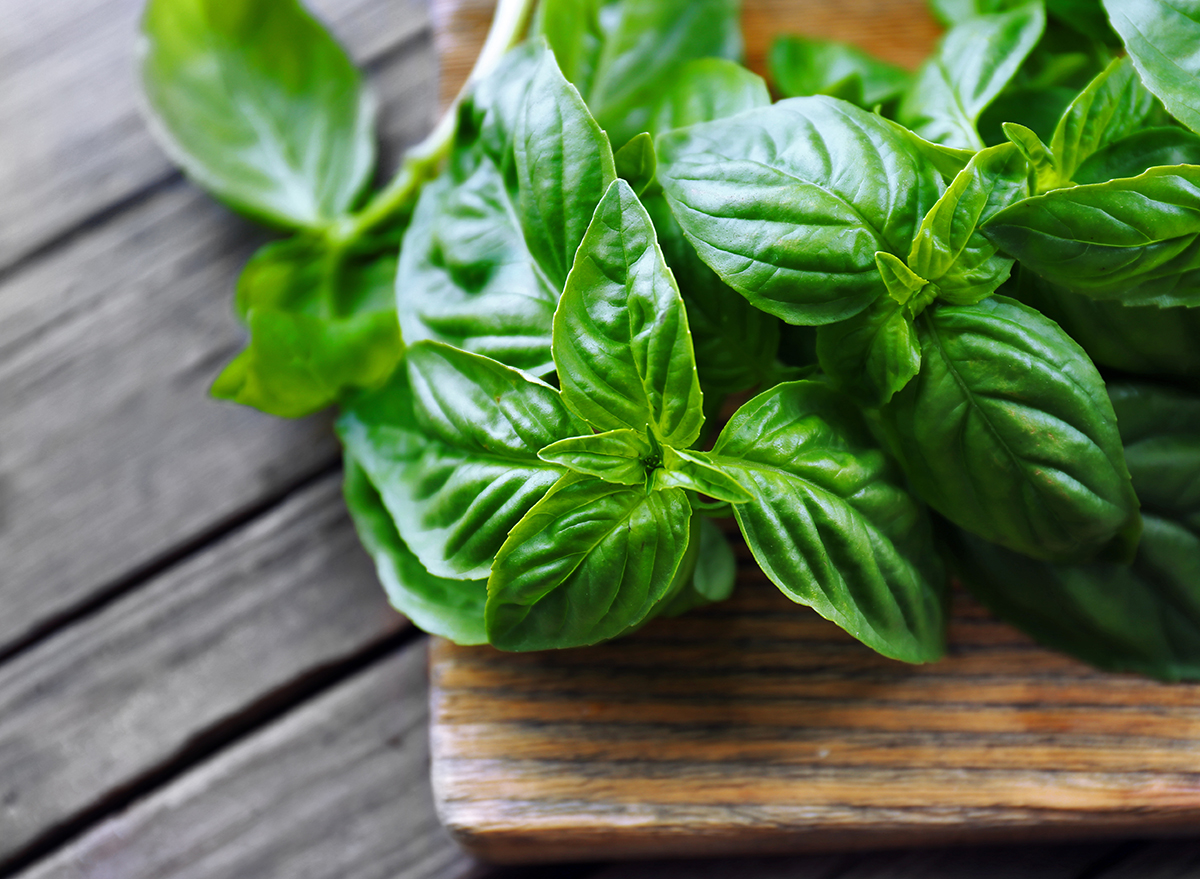
If you've gone through the trouble of making homemade pasta sauce, don't just mix it in with the pasta and serve it. Add some finishing touches, like freshly grated Parmesan, chili flakes, and fresh basil. They're simple things that make a world of difference.
For more, check out these 108 most popular sodas ranked by how toxic they are.
